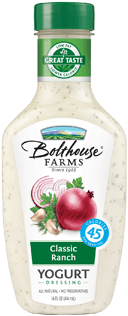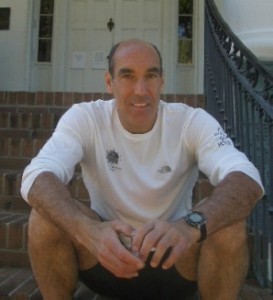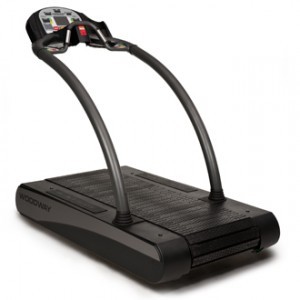The Goodyear man was an ultra marathoner and triathlete who died May 26 while training for a 100-mile trail run this summer in Colorado. It was to be his 10th time conquering the Leadville Trail 100 Run.
His family planned to be on hand in August when Greer, 53, crossed the finish line and made his 1,000th mile.
Greer’s body was found close to the summit of Humphrey’s Peak in Flagstaff, a place where he trained many times before.
“He was doing a double loop,” said his brother, Bill Greer. “He starts at the base, he goes up to the summit and went back down and loops back up for a second round. He was on his second round and he was very near the summit where they found him.”
John Greer was found unconscious and not breathing by two hikers around 11:30 a.m. about a quarter of a mile beneath the summit, according to the Coconino County Sheriff’s Office. The two hikers performed CPR for more than 30 minutes but were unable to revive Greer.
The county’s search-and-rescue coordinator and volunteers hiked to the location, about 12,000-foot elevation, and confirmed he was dead, the Sheriff’s Office said.
While the official cause of death has not been released by the Coconino County Medical Examiner’s Office, the family said Greer suffered from an underlying heart condition that he was unaware he had.
“It wasn’t a slip and a fall,” Bill Greer said. “They had to do an autopsy to rule out any foul play.”
John Greer had run in hundreds of competitive races, from 5Ks to hundred-milers.
He was readying for a 100-mile out-and-back course in the midst of the Colorado Rockies. The low point of the trail is 9,200 feet. The high point, Hope Pass, is at 12,600 feet, according to the race website.
“He’s done it nine times previously and in his training routine, it wasn’t uncommon for him to go up to the altitudes of Flagstaff or up to the Grand Canyon,” Bill said.
Bill said his brother carried a disciplined personality. John had been a runner since he was young.
“It was a central part of his life, and part of the reason he loved living in Arizona is because there’s so many beautiful places to train,” Bill said.
John often ran the trails of White Tank Mountain Regional Park. In fact, he loved the area so much that he and his wife, Mary, began the annual Cactus ChaCha Trail Runs in 2004. John was race founder and race director.
The races, which draw more than 500 participants, are scheduled for October 13 in the park.
“He was kind of evangelical about running and he loved the idea of starting this race because it got many other people interested in running as well, specifically trail running. He loved being in the mountains,” his brother said.
John was competitive enough that his times in nearly all of his races were in the top 10 percent of the field, Bill said. He ran about four races per month.
“He had his routine,” Bill said. “He was a numbers guy and he kept track of every run, every race, what his times were. He had spreadsheets going back for every training run he ever did. He kind of measured and treated it with that degree of calculated discipline.”
John grew up in Minneapolis and graduated from the University of Wisconsin-Madison, where he met his wife.
The couple often ran competitions together, although John would be more inclined to run the longer-distance courses, Bill said.
After college, John became a trader on the Chicago Board Options Exchange and the Chicago Mercantile Exchange.
He came to the Valley more than 20 years ago to attend Thunderbird, the American Graduate School of International Management, now known as Thunderbird School of Global Management in Glendale.
His brother said he graduated and settled here because it was a great place to run year-round.
A real-estate agent and broker in the West Valley, John Greer recently left his previous firm to start his own company, LongRun Realty, where he was the designated broker.
Business had just begun taking off, Bill Greer said.
“John took no shortcuts,” he said. “He did everything the right way. He took his fiduciary responsibility extremely seriously.”
Recovering John’s body posed a high risk for the first responders because of the high elevation, high winds and wind chill, authorities said.
A rescue helicopter was unable to land in the rough terrain so rescuers evacuated the body using a long-line rope system that suspended his body underneath the helicopter.
“As far as preparation goes, he had his gloves on and his extra shirt and the right kind of equipment and extra water, all of that stuff,” Bill said. “It certainly wasn’t a matter of him not being prepared. In fact, he was … prepared for just about any contingency.”
Bill, who lives in New York, expects his brother will be remembered for his modesty, honesty and integrity.
“Although he was a private guy, I can just tell as I’m meeting his friends and talking to people, the degree of respect people had for John,” Bill said. “It was something to see because he was kind of a modest guy, considering all of his accomplishments. The thing that he was most proud of is running.”
http://www.azcentral.com/news/articles/2012/06/03/20120603flagstaff-runner-died-colorado-race.html
The Cactus ChaCha Trail Run Link: http://www.cactuschacha.com/





